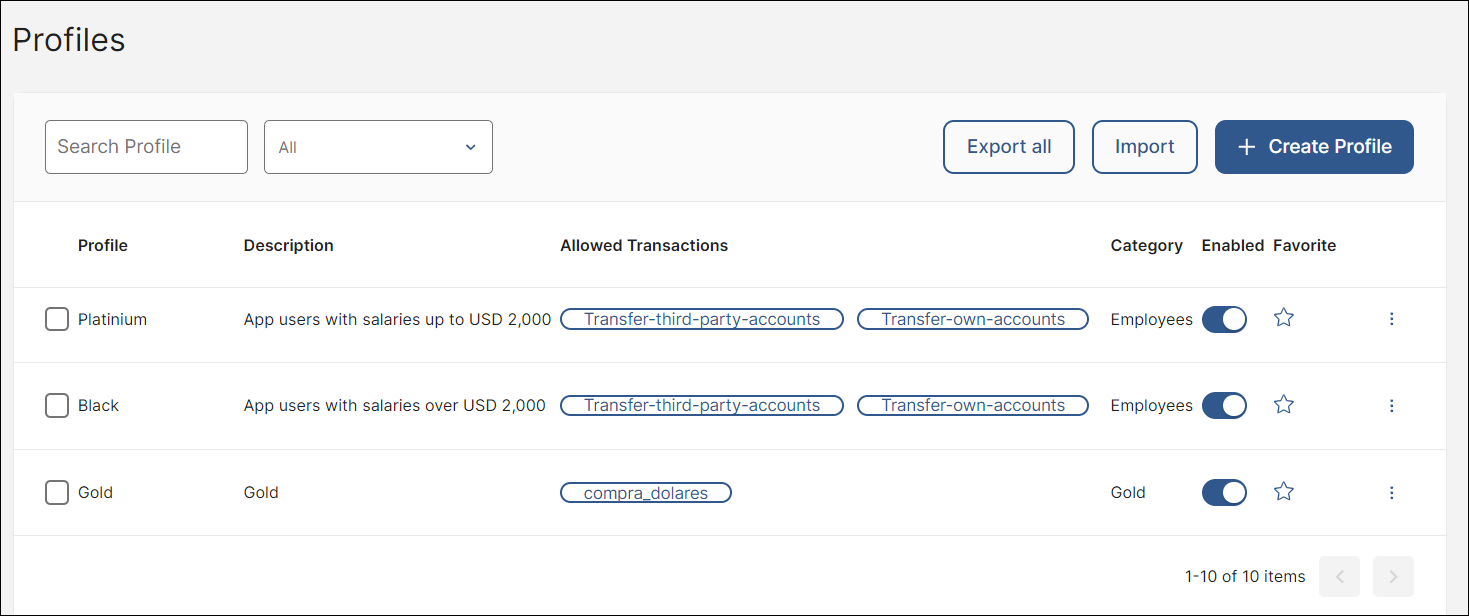Profiles
Configuring user profiles is the third step to be carried out in BRM, after you configured the transactions and the products related to those transactions.
A profile in BRM is a container configured with a collection of parameters that allows you to classify app users. By setting profiles, you determine whether an app user associated to a certain profile can perform a specific transaction or not.
Profiles are defined based on your client's needs and business. For example, if your client is a bank, and it offers personal accounts services, it may ask you to configure three new profiles: Silver, Gold and Black. In addition, if the same bank provides corporate account services, it may ask you to configure two additional profiles: Corporate Admin and Corporate Analyst. All these profiles can be part of the same app, according to the client's requirements.
Note
App users are associated to profiles in BRM through an API. Contact your admin for assistance.
The Profiles page (BRM Home > Profiles) shows all the profiles created, imported or edited by BRM users in your environment.
Navigate the Profiles page

On the Profiles page, you can see the details of existing profiles to define if they meet your client's requirements and, if necessary, make configuration changes. Additionally, if the profile you need has been created in other environment, you can export it and then import it from your local device to your environment. If any of the existing or imported profiles don't meet your client's requirements, you can create one from scratch.
Refer to Profiles Main Actions to learn more about each action available in this page.
Once you have configured the profiles according to your client's needs, you are ready to configure the rules that evaluate the transactions based on the parameters you define.